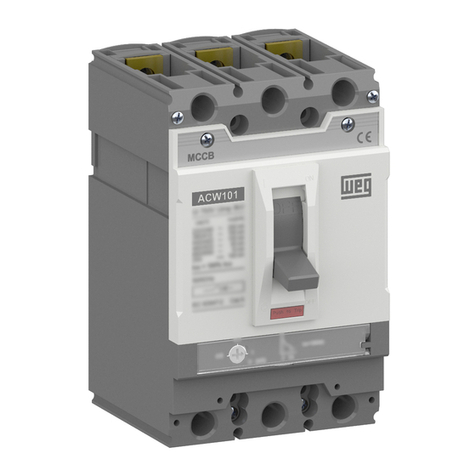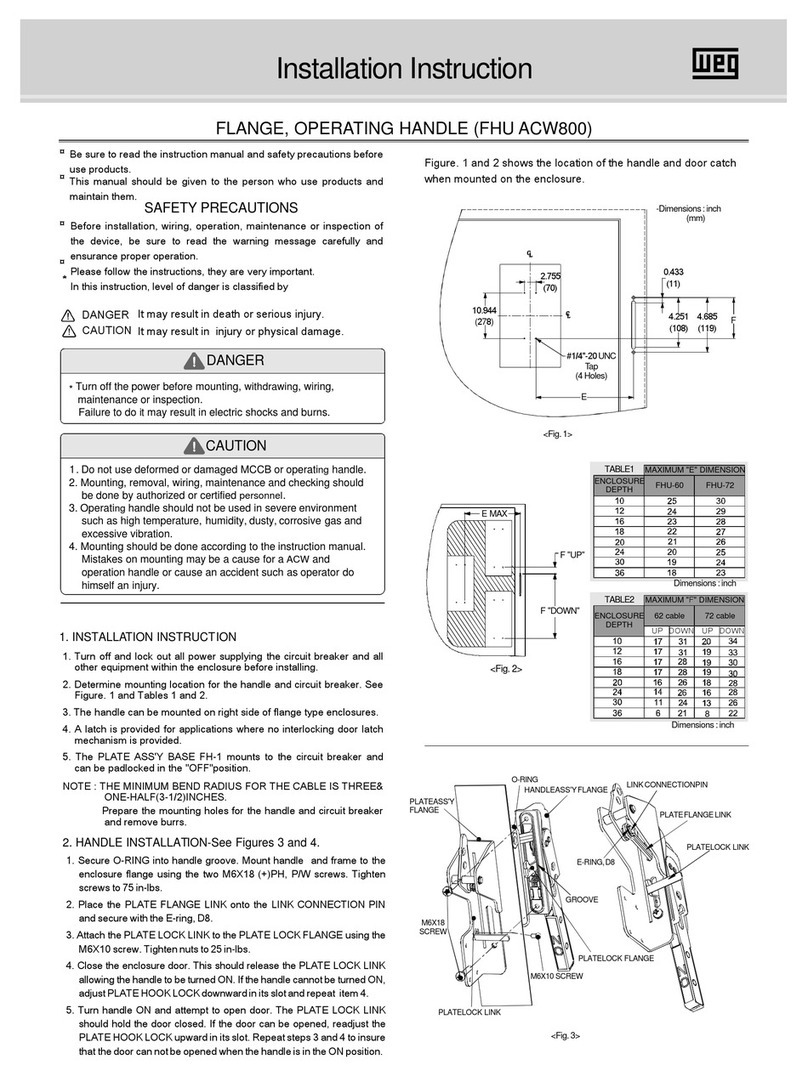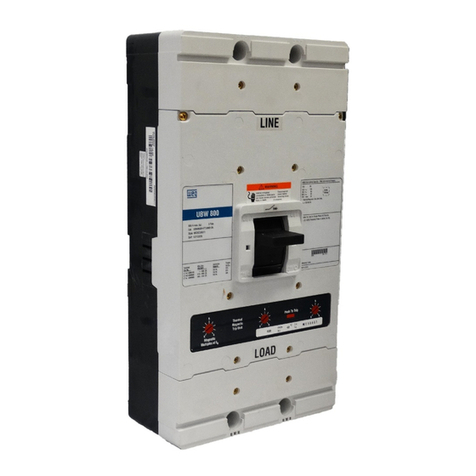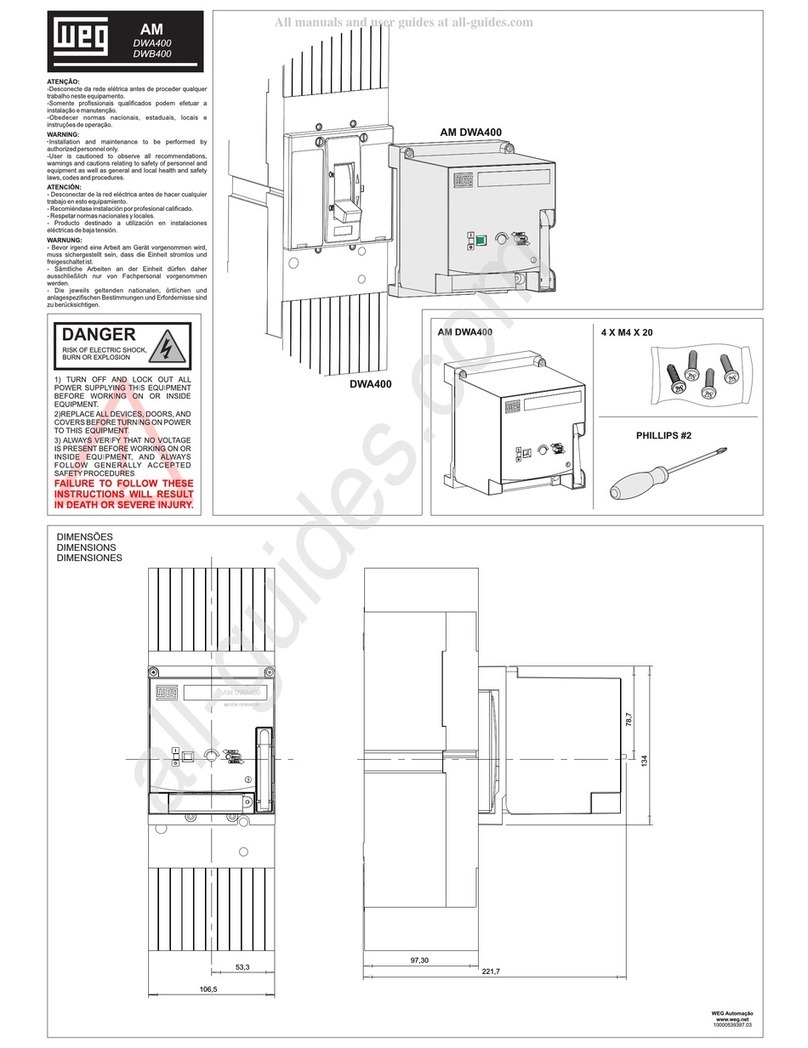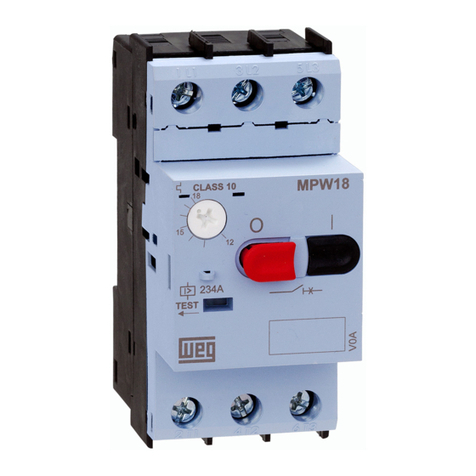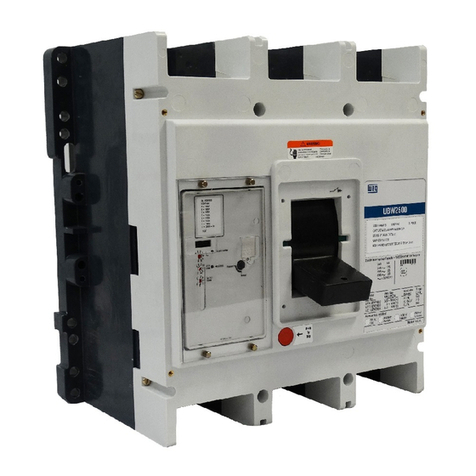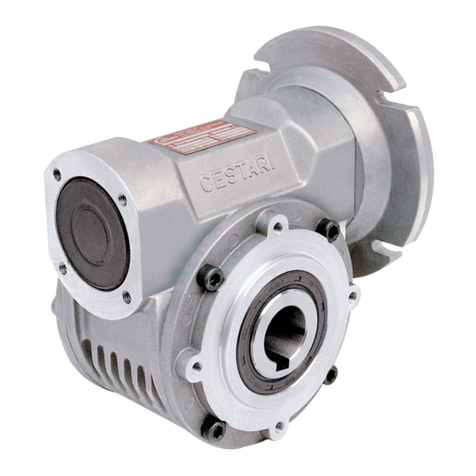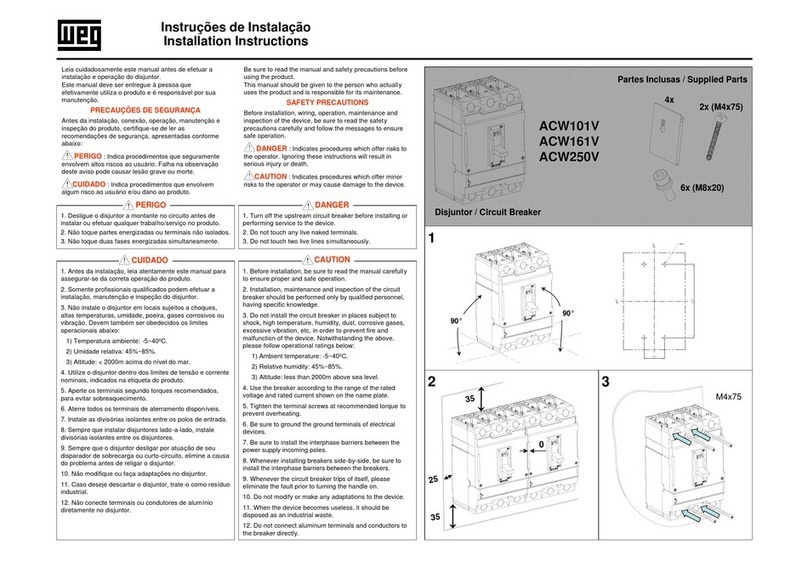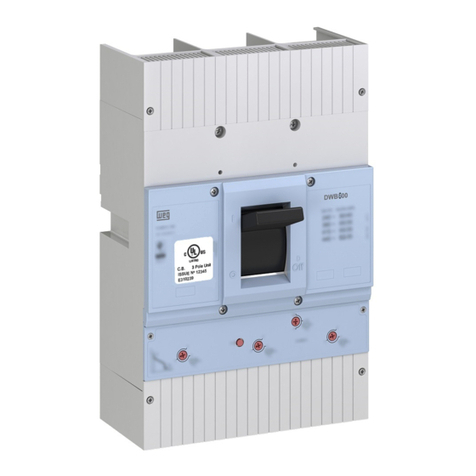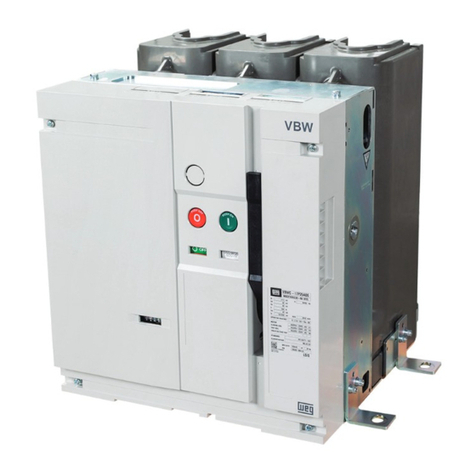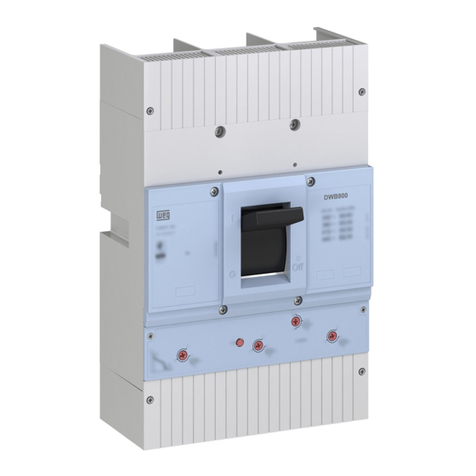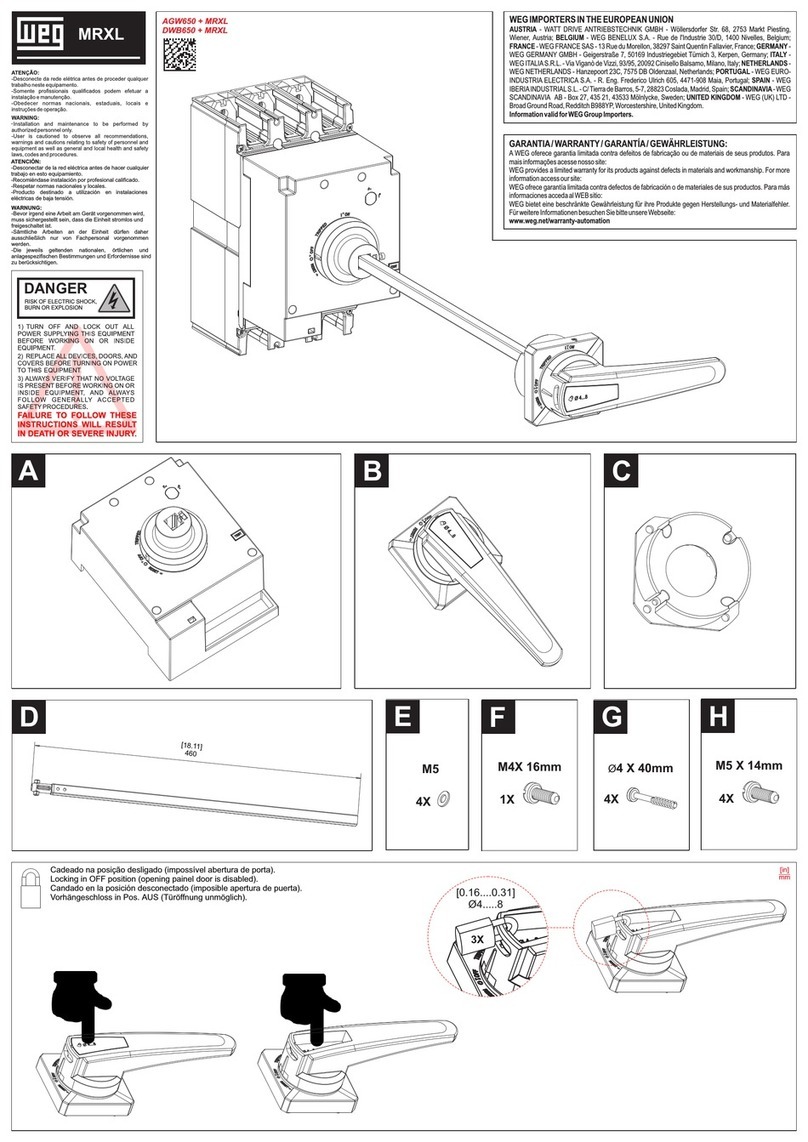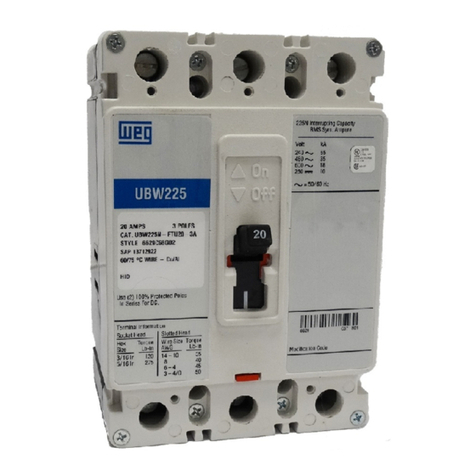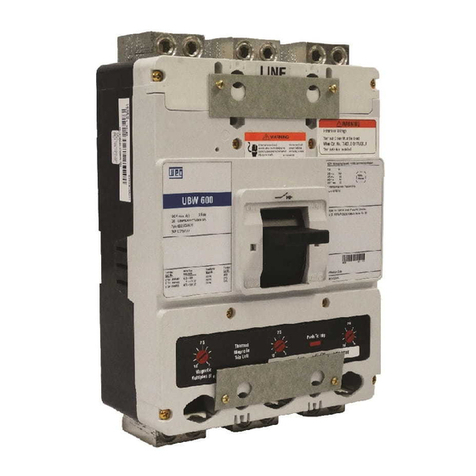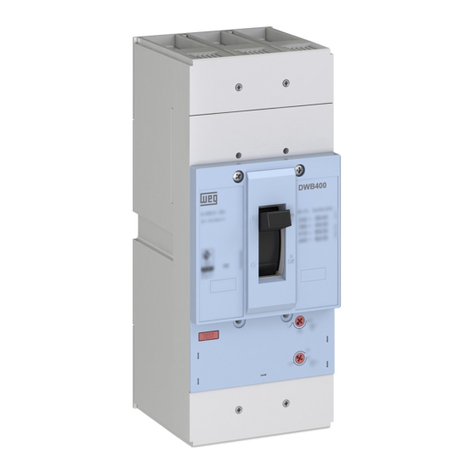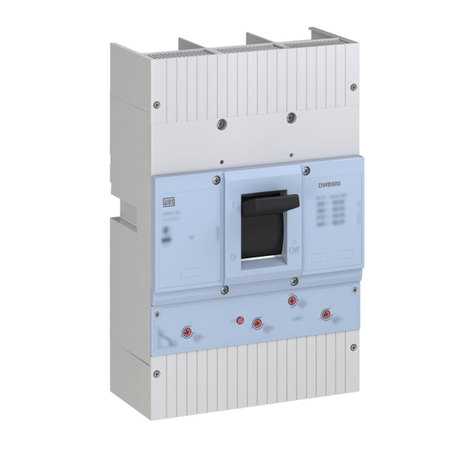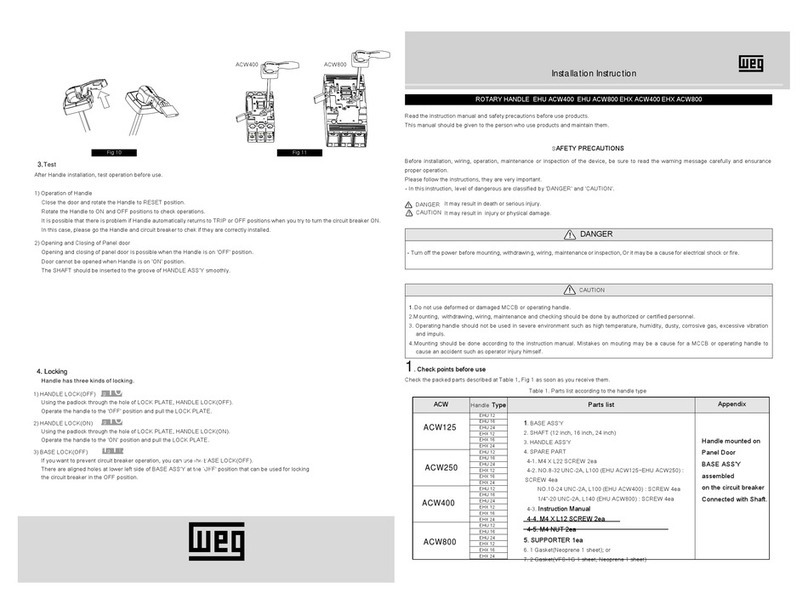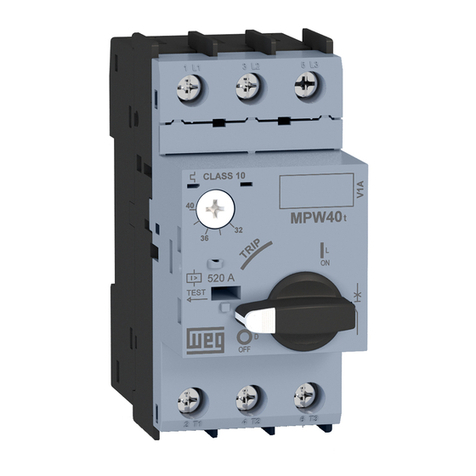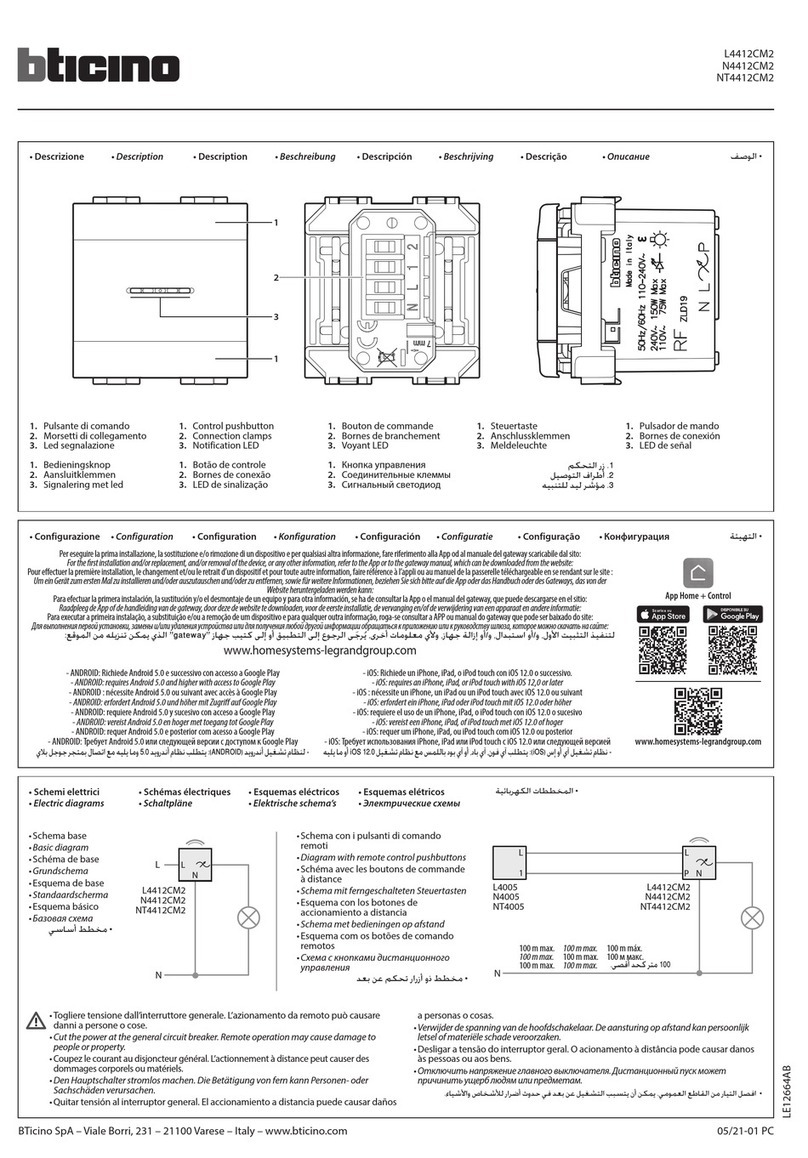
www.weg.net
ABW - Air Circuit Breaker | 9
DANGER!
Only qualified professionals with training and experience in electrical circuits must execute the work described in this
manual. These people must also understand the risks involved in the work, and only execute it after reading all the
contents of this manual.
The correct operation of the ABW circuit breakers depends upon the appropriate handling and correct instal ation,
operation and maintenance. Neglecting the basic requirements of installation and maintenance can lead to injury to the
user and/or damage to the equipment and instal ation.
The ABW circuit breakers have features developed to prevent undue operation. However, such features do not by
themselves eliminate all and any risk. Thus, the user is responsible for recognizing the potential risks, using individual
and collective protective equipment, and for taking suitable safety measures.
Do not execute any adjustment or operate the equipment if the safety devices are not present.
Before executing the visual inspection, test or maintenance in this equipment, disconnect all the power supply circuits.
Consider the circuits to be energized until they are all really de-energized, tested, grounded and identified. Particular
attention should be paid to the electrical system where the equipment is installed, as there may be reverse power supply.
Before installing covers or closing the doors of the panel, inspect the area of the busbars to check that no tools or other
objects have been left in contact with them. Also check that there are no parts of covers or closings of the panel in
contact with or very near the busbars.
Before executing any electrical connection ensure that the circuits are de-energized and grounded.
Introducing foreign objects in the equipment can cause a short-circuit, which can result in irreparable damage, injury or
death. Short-circuits release a large quantity of energy, which leads to the quick expansion of superheated and ionized
gases. As a result, burns can occur even before preventive actions are taken. People and objects can also be thrown
several meters from the equipment.
Such foreign objects can be tools, test remains, instruments, wires, cables or other objects, conductors or not. It is also
advisable to maintains cloths and other materials a long way from the equipment.
ATTENTION!
Ensure that the screws of the terminals are tightened as per the torque recommended in this manual. The screws and
their tightening must be checked periodically, always with the circuits de-energized and grounded.
Do not install the circuit breaker in dirty places at high temperatures, with humidity, dust, corrosive gases, vibration or
lows. The non observance of this recommendation can result in the malfunctioning of the circuit breaker.
Whenever the circuit breaker is turned off by the action of the protection unit, eliminate the cause of the failure before
turning the circuit breaker on again.
Only use the circuit breaker in circuits of 50 HZ or 60 HZ, paying attention to the corresponding model of the protection unit.
CAUTION!
Receipt
Execute the visual inspection immediately after receiving the circuit breaker, and even before removing it from the
pallet. If there is any sign of damage or flaws caused by the transportation, inform the carrier and WEG directly.
Transportation
Maintain the circuit breaker attached to the pallet and transport the unit using a trolley or forklift. Observe the
following additional recommendations:
- Always maintain the pallet horizontal;
- Ensure that the load is balanced on the forks of the forklift;
- Attach the pallet to the forks so that it does not move or fall during the transportation;
- Transport the unit at a low speed, without abrupt movements, avoiding collisions with other structures, equipment
or people;
- Only raise the unit to the extent required to pass over obstacles on the floor, and never above people.
Handling / Movement
Removable hooks are supplied with each circuit breaker so that it is removed from the pallet or extraction car,
suspended by a crane. This is the only method recommended for moving the circuit breaker. Be careful not to
damage the equipment if using other methods. Further details can be found on page 22.
Other important recommendations:
- Do not put cords or cables through the suspension eyelets. Always use safety hooks with a lock;
- The suspension cables must not be less than 45º from the horizontal.
Storage
If it is necessary to store the circuit breaker before installing it, maintain it in its original packaging, in a clean, dry,
ventilated and heated place to avoid condensation. As with any other electrical equipment, protect it from dust and
humidity. Do not store the circuit breaker in an uncovered place orexposed to bad weather.
Introducing foreign objects in the equipment can cause a short-circuit, which can result in irreparable damage,
injury or death. Short-circuits release a large quantity of energy, which leads to the quick expansion of superheated
and ionized gases. As a result, burns can occur even before preventive actions are taken. People and objects can
also be thrown several meters from the equipment. Such foreign objects can be tools, test remains, instruments,
wires, cables or other objects, conductors or not. It is also advisable to maintains cloths and other materials a
long way from the equipment.






